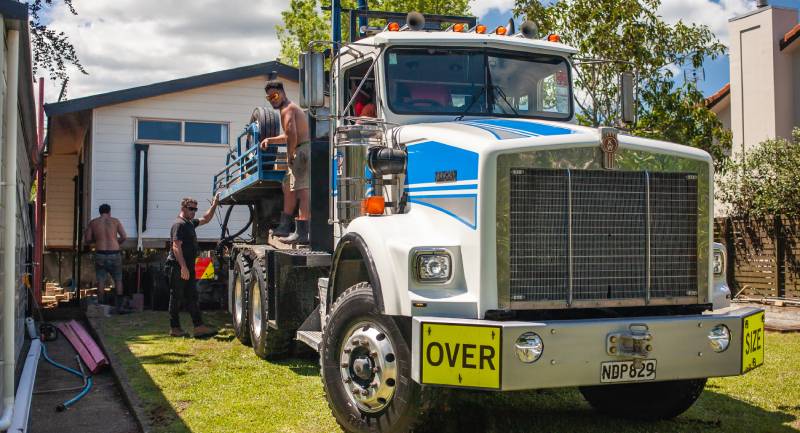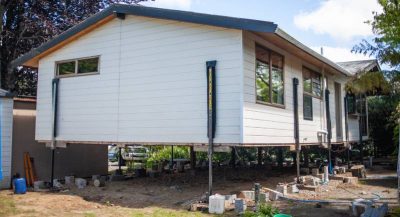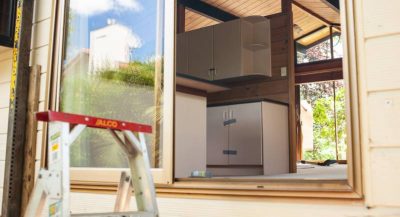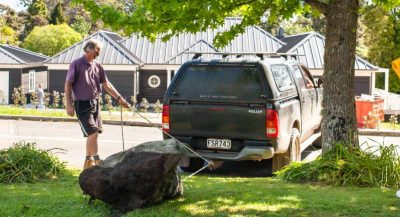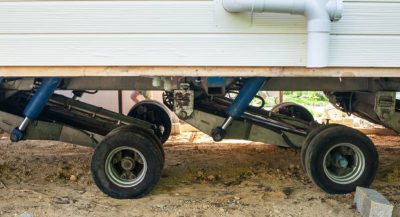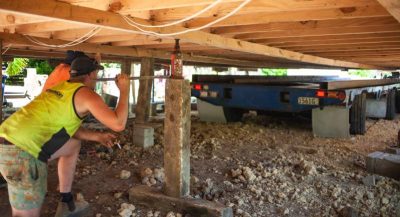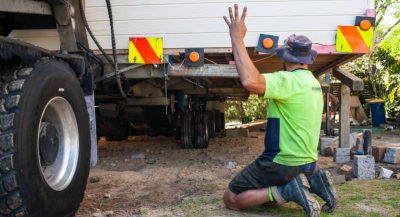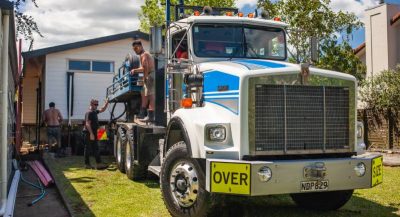House removal isn’t something you see every day. From time to time, however, you’ll be driving home late at night, and have to give way to a house driving down the road. The relocatable home will pass, you’ll marvel at how they fit the house onto the truck, and then you’ll go back to your normal life. This passing thought about how the house removal process works doesn’t often come up, so we thought we might as well demystify it for you.
There’s an awful lot of things that go into moving a house. Most of it centres around good planning, but when the move day approaches, it’s all hands on deck to ensure that your house gets to its next destination successfully.
It can be broken down into three main stages – the preparation stage, the loading stage, and the moving stage. To help make it as clear as possible, we have included the relevant photos where possible.
The Preparation Stage
For any house removal service, the preparation stage is the stage that makes or breaks the rest of the project. First, where possible, we gain access to the building plans of the house, so we can assess the structural integrity of the building. If the building features delicate cladding, or won’t support its own weight during the lift, we work with our engineers to ensure that additional support beams are added to strengthen the frame. The house pictured didn’t need such support, so we set to work disconnecting the plumbing, electricity, and other peripherals.
At the same time, the interior is prepared – which means removing all furniture and items, as well as securing anything that may move during the haul. This includes drawers, cupboards, and hanging light fittings.
After this, the house needs to be lifted. Our team sets to work positioning jacks and supports under the house, to gradually lift it. As the house is lifted, the house’s ties to its foundations are removed. Now, its weight is under our control, and there’s no going back.
While raising the house up, it’s crucial that each section being jacked moves in unison with the other jacking points, to avoid uneven lifting and flexing of the frame. This requires many eyes, watching all areas of the house. Clear communication between team members is the key to pulling this off successfully.
Once the house has been lifted up to a height where the truck can comfortably position itself underneath, the preparation stage is almost complete. From here, any roof fixings are removed to reduce the total height of the house, and a wooden deflection pole is added to the roof, just in case the house comes into contact with any low hanging power lines.
While this happens, the Haines House Removal route planning team is been busy reaching out to the neighbourhood. It’s important that our process doesn’t disrupt the community, and goes as smoothly as possible. So in the weeks leading up to the final move, leaflets are handed out to the residents along the house moving path – notifying them of the date of the move, and asking that any trucks or vans are left off the road, out of the way of our haulage truck.
The Loading Stage
Once the lifting preparation has been completed, the day comes where the house can be put onto the truck.
The first step to this process requires that any obstructions are moved, so the removal truck has a clear path of entry. Things like trees, sheds, and even rocks all need to be moved away, with as little collateral damage as possible. If there’s a tight street entrance, often street signs will be temporarily disassembled.
On loading day, we often have members of the community come to watch the process take place, as the skillful manoeuvring of the truck, and teamwork communication of our talented movers really is a sight to behold. We enjoy interacting with these spectators, love to show people how a house removal service works.
When the path to the house is cleared of obstructions, our oversized Kenworth C500 moving truck is able to guide its way in. This beautiful truck is often the star of the show, and with its 15 litre, 600 horsepower diesel engine, it makes light work of a 18,000 kg house.
The loading stage needs careful concentration, and pinpoint accuracy from our skilled truck driver and team members. The trailer has a hydraulic lifting capability, allowing it to meet the bottom of the house. Our team collaborates between the driver, trailer operator, and ground team members to ensure that the truck is aligned perfectly in the middle of the house.
With some skillful micro manoeuvring and eyes on the ground watching all areas underneath, the truck slowly makes its way backwards, underneath the house. While this happens our team positions large wooden posts horizontally on the trailer to give it a stable bed to sit on. If any areas of the house need adjustment using the jacks, these are carefully dropped or raised.
Once everything is aligned, and the positioning on the trailer has been measured and triple checked, the hydraulic trailer is then lifted up to meet with the house. It’s crucial that all parts of the trailer meet with the house at the same time to prevent flexing, so spotters on the ground use visual hand signals to ensure that the trailer operator can move to the perfect pitch, yaw, and height.
Once the trailer has been brought up to house height, we then attach the driving lights and high-visibility panels. It’s at this stage that the surrounding house jacks start to fall away, as the trailer takes the weight of the house. The house is then secured to the trailer using chains and undergoes a final once-over check to make sure that it’s ready for the moving stage.
The Moving Stage
Because of the potentially disruptive nature of a house truck on the roads, no house removal service is able to conduct the physical move before 10:30 pm in the greater Auckland area. In the leadup to that time, however, there is still a lot of preparation. This preparation involves scouting the entire route – checking bridge heights, parked obstacles, and other tight spots along the journey. Once the route is prepared, a final once-over is given, the chain lights are activated, and our loaded Haines House Removal Kenworth truck starts carefully moving behind an accompanying Wide Load pilot vehicle.
This moving stage is a slow process and depending on the obstacles in the way, it can take around a couple of hours to travel 10km. Depending on how long the journey is, we often use stop-off points along the way to break the journey into manageable sections each night – since it pays to have a well-rested and alert team.
Once the house reaches its location, it is then jacked up again, and then after checking it’s stable, the trailer drops away from the house. Mostly, we will journey to the house’s end destination, but often if the owners have no end destination, they will instead sell it through our house brokering service. This means that we store it at our Helensville yard until a buyer purchases it for their own land – kickstarting the house moving process once again.
Fenton House Removals has a vast wealth of experience in the house moving industry, with an incredible amount of planning going into every move. We hope that this article has shed some light on how a house removal service operates, so when you see a house on the move, you know exactly how it got there.
Looking at relocating your home? Get in touch with Fenton House Removals to discuss your options.
